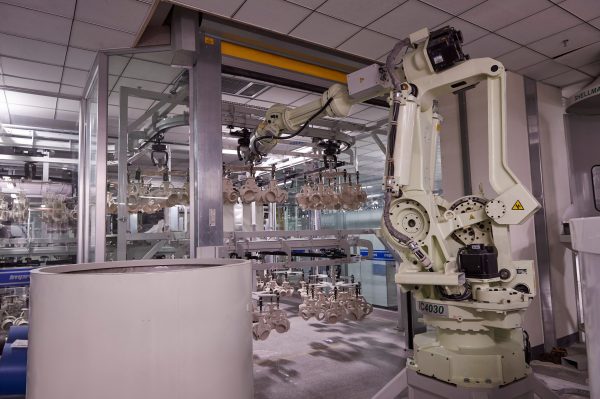Investment Casting vs Centrifugal Casting
When talking about casting processes, two specific techniques may be mentioned: investment casting and centrifugal casting. While both involve pouring a metal into a ceramic mold or die, the methods on how these two particular techniques differ. Let’s take a look at these methods and figure out which one is right for your part.
What is Investment Casting?
Investment casting involves creating a wax pattern of the part. This pattern is then covered with a liquid ceramic that hardens into the shell mold. The wax is melted or burned out as the mold is then filled with molten metal and allowed to cool to form the part. The mold is removed to reveal the part as the ceramic shell is only used one time for each part.

Investment casting is ideal for simple and complex parts. The method may be used for low and high-volume production runs, as well as for prototyping components. In certain circumstances, the part may not need additional heat or surface treatments to endow the metal with certain mechanical capabilities. The investment casting method works with a variety of metals and is used in numerous industries such as automotive, medical, industrial equipment, aerospace, and energy.
What is Centrifugal Casting?
For centrifugal casting, molten metal is poured into a die as the entire die spins. The centrifugal force of the spinning die forces the molten metal to be evenly distributed throughout the mold. Once the metal cools, the part is removed from the die as the die can be reused for the next part. There are two types of processes: horizontal centrifugal casting and vertical centrifugal casting.
Centrifugal casting is typically used for parts of very large sizes, such as one going up to 135,000 lbs. It may be used when certain metal materials cannot be cast using other casting processes. It is also ideal when the part is symmetrical and can rotate on its axis.
Investment Casting VS Centrifugal Casting
Investment casting is usually the top choice when you have parts with intricate details and shapes. It is also ideal when only requiring small to medium production runs or prototypes. If the part has very tight tolerances or very thin walls, investment casting is the preferred method. If you need large castings, castings made from metals that cannot work with other processes, or parts with very large diameters over 15 feet, centrifugal casting may be the appropriate choice.
Learn about possible casting processes here at Impro.